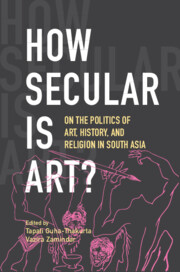13 - For the Love of God: Conservation as Devotion in Tamil Nadu
Published online by Cambridge University Press: 21 February 2023
Summary
Many of the objects of Indian art history began their life as religious buildings or things. Some remain under worship and attract devotees; others have entered the secular frame as artworks and monuments, and are now valued for their aesthetic and historic significance. As they move from one category to another, buildings and artefacts find themselves placed within one of two regimes of care. Icons that are under worship are nurtured through regular lustrations and offerings of clothing and food, and living temples are often expanded and altered to serve growing congregations and changing needs. These processes support the spiritual life of the artefact while impinging upon its material body. But in the case of musealised artefacts and monuments, the priorities are reversed: utmost attention is paid to the preservation of their physical bodies and not the numinous presences that are meant to inhabit them (Image 13.1). Icons are to be stripped of extraneous matter, cleaned, and protected from touch and corrosive substances; temples are to be preserved in their original form without additions and alterations or coats of garish paint. Practices and substances that sustained the spiritual life of a building or artwork are seen as harmful for the material body of the art object, and secular institutions that took charge of India’s artefacts were able to justify their desacralization as a necessary condition for a superior kind of care that would ensure the survival of these objects in the longue durée. In this framework, it was the secular regime of care that possessed the expertise and the protocols that could preserve India’s heritage, which worshippers would actually damage and wear down through their devotions. This claim—that secularism preserved what devotionalism destroyed—gave authority to the state institutions as the legitimate entities responsible for the protection and conservation of monuments and works of art.
The protocols of the two regimes produced artefacts and monuments that had very different ‘looks’: bare metal or stone on the one hand, and embellished and encrusted surfaces on the other. In this essay, however, I study a growing trend in south India in which the boundary between devotional care and professional conservation is getting blurred through the work of several civil-society initiatives which combine professional conservation standards with devotional care.
- Type
- Chapter
- Information
- How Secular Is Art?On the Politics of Art, History and Religion in South Asia, pp. 387 - 408Publisher: Cambridge University PressPrint publication year: 2024



